Are you planning a trip to Vietnam and wondering about the environmental challenges facing its national parks? What are the main threats to the park’s ecosystem? SIXT.VN offers expert travel advice and seamless booking services to help you explore Vietnam responsibly. The major problems are fertilizer, vehicles, coal-fired power plants, and the oil and gas industry causing excess deposition of nitrogen everywhere. Let’s dive into the significant threats to park ecosystems, ensuring you’re well-informed and ready for an unforgettable journey, including sustainable tourism, conservation efforts, and biodiversity protection.
1. Understanding Ecosystem Threats in National Parks
Ecosystems in national parks face numerous threats, each capable of disrupting the delicate balance of nature. Understanding these threats is crucial for preserving the biodiversity and natural beauty of these areas. This knowledge empowers travelers to make informed decisions and support sustainable tourism practices.
1.1. What Are the Key Threats to National Park Ecosystems?
The key threats to national park ecosystems include pollution (air, water, and noise), climate change, habitat destruction, invasive species, and unsustainable tourism practices. These factors can lead to a decline in biodiversity, disruption of natural processes, and long-term damage to the environment.
1.2. How Does Air Pollution Impact Park Ecosystems?
Air pollution, primarily from industrial emissions and vehicle exhaust, introduces harmful substances into park ecosystems. These pollutants can damage vegetation, acidify soil and water, and harm wildlife. According to the Environmental Protection Agency (EPA), air pollution can also reduce visibility, impacting the aesthetic value of parks.
1.3. What Role Does Climate Change Play in Threatening Park Ecosystems?
Climate change exacerbates existing threats and introduces new challenges, such as rising temperatures, altered precipitation patterns, and increased frequency of extreme weather events. These changes can lead to habitat loss, shifts in species distribution, and increased risk of wildfires. Research from the National Park Service indicates that climate change is one of the most significant threats to park ecosystems globally.
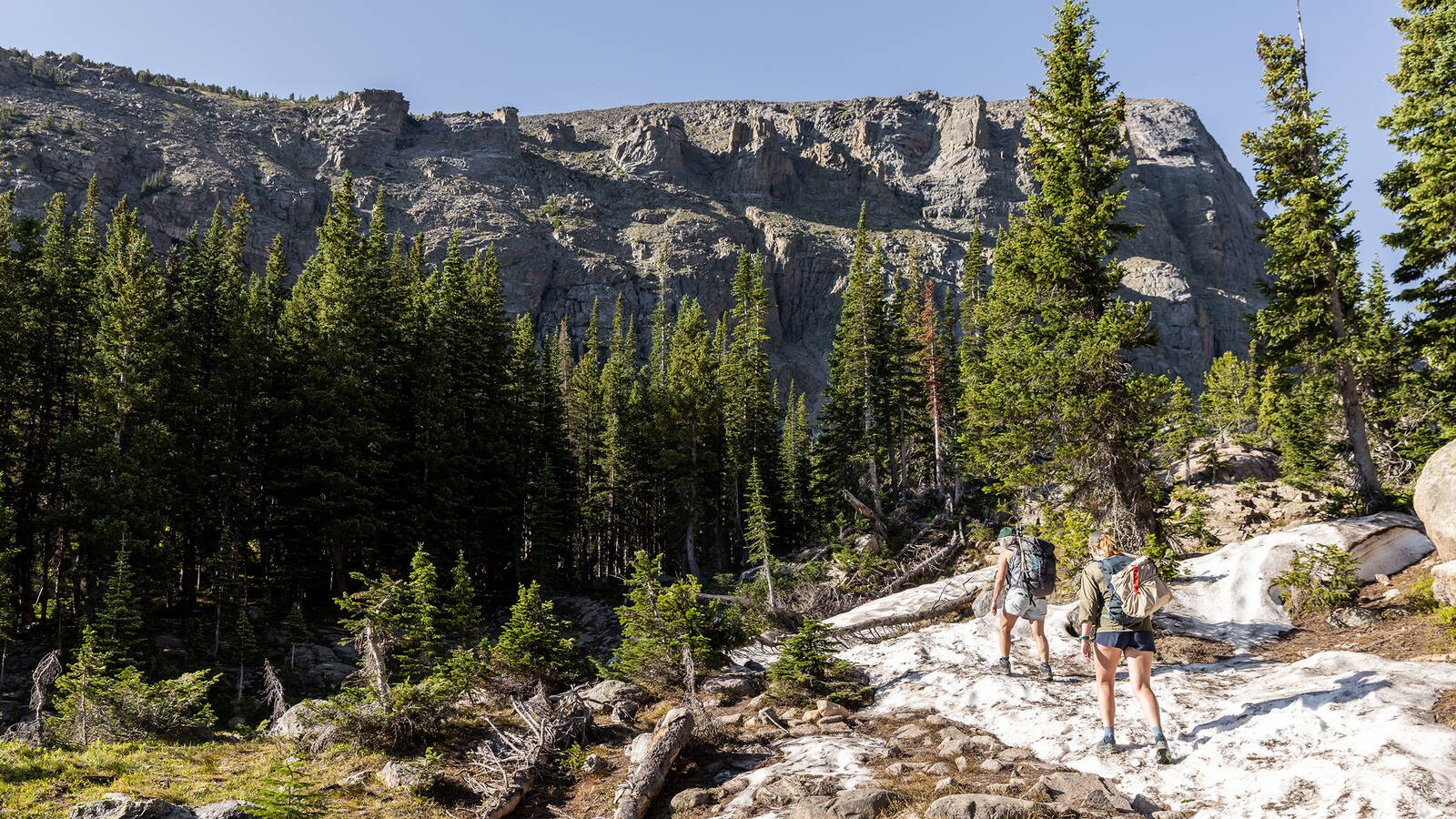 Scientist examining plants in a national park
Scientist examining plants in a national park
1.4. How Does Water Pollution Affect Park Ecosystems?
Water pollution, stemming from agricultural runoff, industrial discharge, and sewage, introduces harmful chemicals and excess nutrients into park waterways. This pollution can lead to algal blooms, oxygen depletion, and the death of aquatic life. Studies by the U.S. Geological Survey (USGS) have shown that water pollution can significantly degrade the health of park ecosystems.
1.5. What Impact Do Invasive Species Have on Native Park Ecosystems?
Invasive species, introduced either intentionally or unintentionally, can outcompete native species for resources, alter habitat structure, and spread diseases. This can lead to a decline in native populations and a loss of biodiversity. The National Invasive Species Information Center (NISIC) provides extensive information on the impact of invasive species on ecosystems.
1.6. How Can Tourism Be a Threat to Park Ecosystems?
While tourism can bring economic benefits, unsustainable tourism practices can damage park ecosystems. Impacts include habitat destruction from infrastructure development, pollution from visitor activities, and disturbance of wildlife. Responsible tourism practices are essential to minimize these negative impacts.
1.7. What are the Specific Consequences of Ecosystem Damage?
Ecosystem damage can lead to a variety of consequences, including loss of biodiversity, disruption of ecological processes, reduced water quality, and decreased resilience to environmental changes. These impacts can have long-term effects on the health and function of park ecosystems.
1.8. How Do Ecosystem Threats Affect Local Communities?
Ecosystem threats can also affect local communities that depend on park resources for their livelihoods and well-being. Loss of biodiversity can impact tourism revenue, while water pollution can affect drinking water quality and agricultural productivity. Protecting park ecosystems is essential for the sustainability of local communities.
1.9. What Measures Can Be Taken to Protect Park Ecosystems?
Measures to protect park ecosystems include implementing stricter environmental regulations, promoting sustainable tourism practices, restoring degraded habitats, controlling invasive species, and educating visitors about responsible behavior. Collaborative efforts between government agencies, local communities, and conservation organizations are crucial for effective ecosystem protection.
1.10. How Can Visitors Contribute to Protecting Park Ecosystems?
Visitors can play a significant role in protecting park ecosystems by following park guidelines, minimizing their environmental footprint, supporting sustainable tourism businesses, and participating in conservation activities. Simple actions, such as staying on marked trails and properly disposing of waste, can make a big difference.
2. Nitrogen Pollution: A Major Threat to Ecosystems
Nitrogen pollution is a significant environmental issue that affects various ecosystems, including those in national parks. Understanding the sources, impacts, and potential solutions for nitrogen pollution is crucial for preserving the health and biodiversity of these areas.
2.1. What Is Nitrogen Pollution?
Nitrogen pollution refers to the presence of excessive amounts of nitrogen compounds in the environment, primarily in the air and water. This excess nitrogen can disrupt natural ecological processes and harm plant, animal, and human health.
2.2. What Are the Main Sources of Nitrogen Pollution?
The main sources of nitrogen pollution include agricultural activities (fertilizer use and livestock waste), industrial emissions (fossil fuel combustion), and vehicle exhaust. These sources release nitrogen compounds into the atmosphere, which can then be deposited onto land and water bodies.
2.3. How Does Nitrogen Deposition Affect Ecosystems?
Nitrogen deposition, the process by which nitrogen compounds are transferred from the atmosphere to the earth’s surface, can have several negative impacts on ecosystems. These include soil acidification, nutrient imbalances, and increased plant growth, which can alter habitat structure and favor certain species over others.
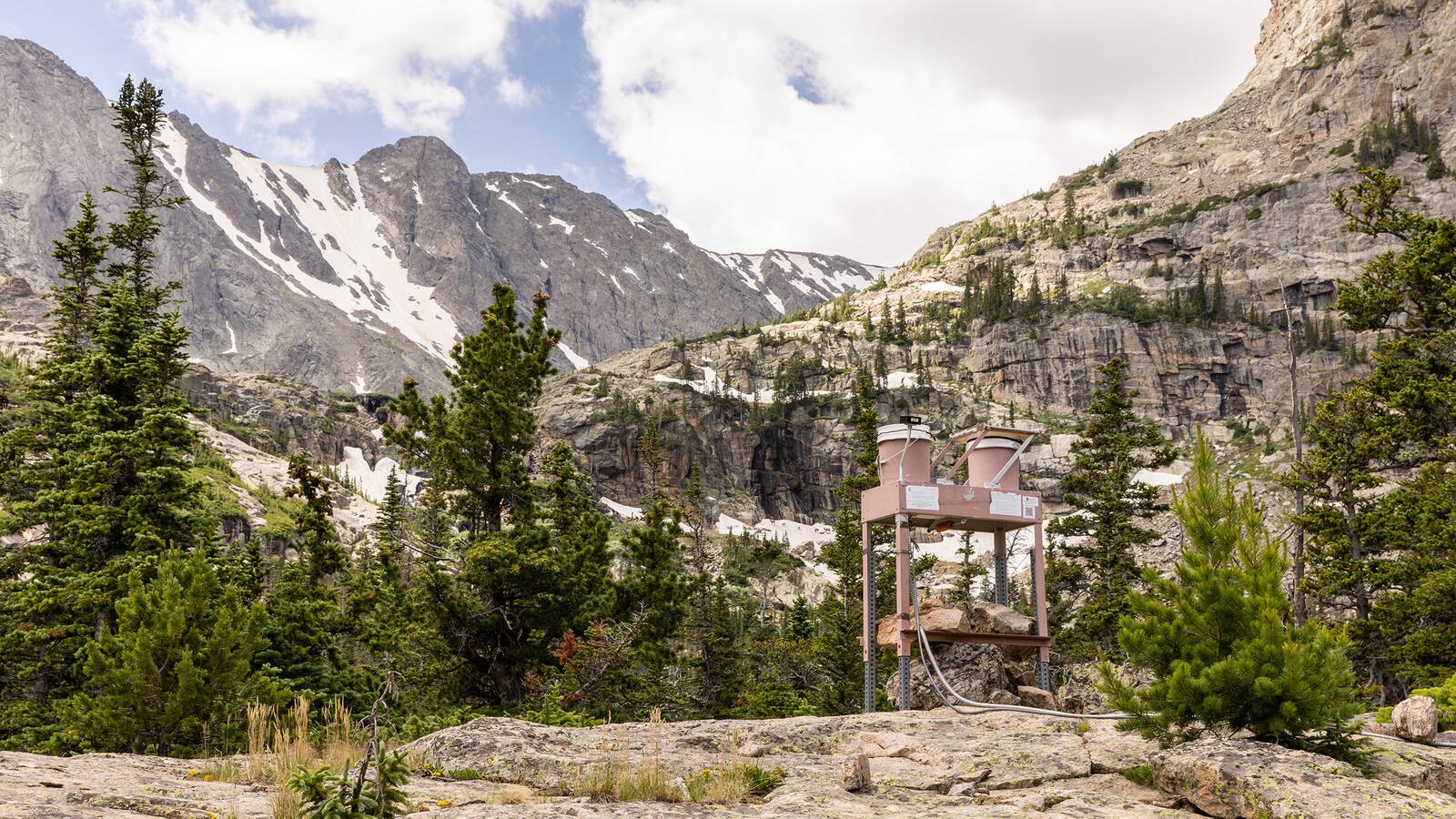 Nitrogen deposition monitoring equipment in a park
Nitrogen deposition monitoring equipment in a park
2.4. What Are the Specific Impacts of Nitrogen Pollution on Plant Life?
Excess nitrogen can lead to increased growth of some plant species, outcompeting others and reducing biodiversity. It can also make plants more susceptible to diseases and pests. In nutrient-poor environments, such as alpine ecosystems, nitrogen pollution can cause significant shifts in plant community composition.
2.5. How Does Nitrogen Pollution Impact Aquatic Ecosystems?
In aquatic ecosystems, nitrogen pollution can lead to eutrophication, a process characterized by excessive nutrient enrichment. This can result in algal blooms, oxygen depletion, and the death of fish and other aquatic organisms. According to the EPA, eutrophication is a major water quality problem in many areas.
2.6. What Role Does Livestock Play in Nitrogen Pollution?
Livestock contribute to nitrogen pollution through the release of ammonia from manure and urine. This ammonia can be converted into other nitrogen compounds in the atmosphere, which can then be deposited onto land and water. Managing livestock waste is essential for reducing nitrogen pollution.
2.7. How Can Agricultural Practices Reduce Nitrogen Pollution?
Agricultural practices can reduce nitrogen pollution by using fertilizers more efficiently, implementing cover crops to prevent soil erosion, and managing livestock waste properly. Precision agriculture techniques, which involve applying fertilizers only where and when they are needed, can also help minimize nitrogen losses.
2.8. What Measures Can Be Taken to Reduce Nitrogen Emissions from Vehicles?
Reducing nitrogen emissions from vehicles involves improving engine efficiency, using cleaner fuels, and implementing stricter emission standards. Catalytic converters, which reduce the amount of nitrogen oxides emitted by vehicles, are also essential for controlling nitrogen pollution.
2.9. How Can Industrial Facilities Reduce Nitrogen Pollution?
Industrial facilities can reduce nitrogen pollution by implementing pollution control technologies, such as scrubbers and selective catalytic reduction systems, which remove nitrogen oxides from exhaust gases. Improving energy efficiency and using cleaner fuels can also help minimize nitrogen emissions.
2.10. What Policies and Regulations Are in Place to Control Nitrogen Pollution?
Policies and regulations to control nitrogen pollution include emission standards for vehicles and industrial facilities, restrictions on fertilizer use, and regulations for managing livestock waste. The Clean Air Act and Clean Water Act in the United States provide a framework for controlling nitrogen pollution and protecting air and water quality.
3. Climate Change: A Growing Threat to Ecosystems
Climate change is an escalating threat to ecosystems worldwide, including those in national parks. Rising temperatures, altered precipitation patterns, and more frequent extreme weather events are causing significant disruptions. Understanding these impacts is crucial for developing effective conservation strategies.
3.1. How Is Climate Change Affecting Global Ecosystems?
Climate change is altering ecosystems through several key mechanisms, including rising temperatures, changes in precipitation patterns, and increased frequency of extreme weather events. These changes are leading to habitat loss, shifts in species distributions, and increased risk of wildfires and invasive species.
3.2. What Are the Main Indicators of Climate Change in Park Ecosystems?
Main indicators of climate change in park ecosystems include rising average temperatures, changes in the timing of seasonal events (such as flowering and migration), and increased frequency of extreme weather events like droughts, floods, and wildfires. Monitoring these indicators can help track the impacts of climate change and inform management decisions.
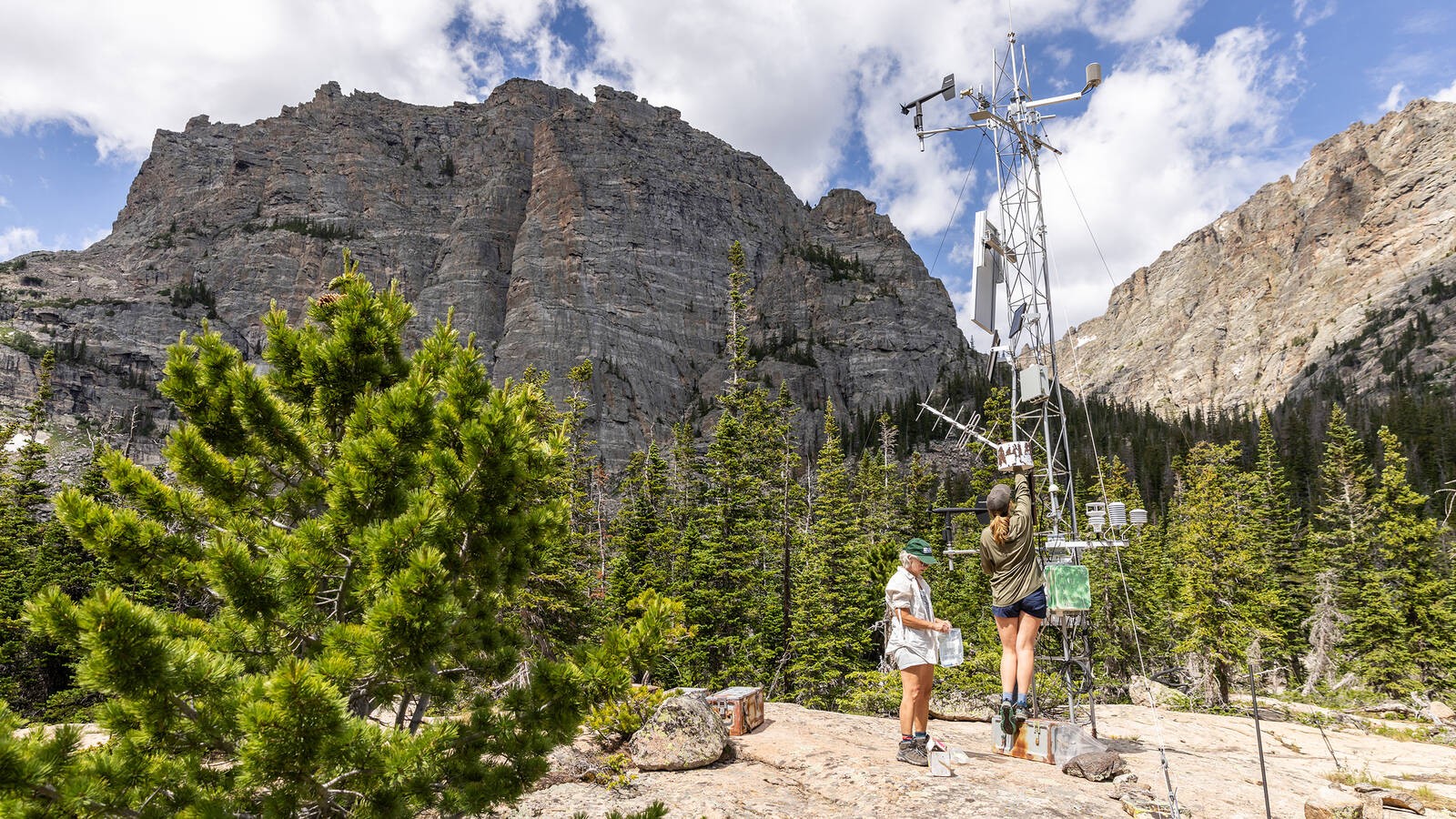 Weather monitoring station in a mountainous park area
Weather monitoring station in a mountainous park area
3.3. How Do Rising Temperatures Impact Wildlife in National Parks?
Rising temperatures can affect wildlife in national parks by altering their habitat, disrupting their breeding cycles, and increasing their susceptibility to diseases and pests. Some species may be forced to migrate to cooler areas, while others may face extinction if they cannot adapt to the changing conditions.
3.4. What Effects Do Changes in Precipitation Have on Park Ecosystems?
Changes in precipitation patterns, such as more frequent droughts or intense rainfall events, can have significant impacts on park ecosystems. Droughts can lead to water shortages, increased risk of wildfires, and stress on vegetation and wildlife. Intense rainfall events can cause erosion, flooding, and pollution of waterways.
3.5. How Are Extreme Weather Events Affecting National Park Ecosystems?
Extreme weather events, such as hurricanes, floods, and wildfires, can cause widespread damage to national park ecosystems. These events can destroy habitats, disrupt ecological processes, and threaten human safety. The increasing frequency and intensity of extreme weather events due to climate change pose a growing challenge for park management.
3.6. What Role Do Glaciers Play in Park Ecosystems and How Are They Changing?
Glaciers play a crucial role in park ecosystems by providing a source of fresh water, regulating streamflow, and supporting unique habitats. However, glaciers are rapidly melting due to climate change, leading to reduced water availability, altered streamflow patterns, and loss of glacier-dependent ecosystems.
3.7. How Does Climate Change Impact Forest Health in National Parks?
Climate change can impact forest health in national parks by increasing the risk of wildfires, insect infestations, and diseases. Warmer temperatures and changes in precipitation patterns can stress trees, making them more vulnerable to these threats. Forest die-off events can have significant impacts on biodiversity and ecosystem function.
3.8. What Are the Potential Consequences of Climate Change for Aquatic Ecosystems?
Climate change can have several potential consequences for aquatic ecosystems, including rising water temperatures, changes in water chemistry, and increased frequency of algal blooms. These changes can harm fish and other aquatic organisms, alter food web dynamics, and reduce water quality.
3.9. How Can National Parks Adapt to the Impacts of Climate Change?
National parks can adapt to the impacts of climate change by implementing strategies such as restoring degraded habitats, managing water resources more efficiently, and reducing other stressors on ecosystems. Protecting and connecting habitats can also help species move to more suitable areas as the climate changes.
3.10. What Role Can Visitors Play in Addressing Climate Change in National Parks?
Visitors can play a significant role in addressing climate change in national parks by reducing their carbon footprint, supporting sustainable tourism practices, and advocating for policies that address climate change. Simple actions, such as using public transportation and conserving energy, can make a difference.
4. Habitat Destruction: A Critical Threat to Biodiversity
Habitat destruction is a primary driver of biodiversity loss worldwide, posing a significant threat to ecosystems in national parks. Understanding the causes and consequences of habitat destruction is essential for effective conservation efforts.
4.1. What Is Habitat Destruction and Why Is It a Threat?
Habitat destruction refers to the process by which natural habitats are rendered unable to support the species present. This occurs when habitats are converted for other uses, such as agriculture, urban development, or resource extraction. Habitat destruction is a major threat because it reduces the availability of food, water, shelter, and breeding sites for wildlife.
4.2. What Are the Main Causes of Habitat Destruction in National Parks?
The main causes of habitat destruction in national parks include infrastructure development (roads, buildings, and utilities), resource extraction (logging, mining, and oil and gas development), and agricultural expansion. Unsustainable tourism practices can also contribute to habitat destruction.
 Construction of a road through a forested area in a park
Construction of a road through a forested area in a park
4.3. How Does Infrastructure Development Lead to Habitat Destruction?
Infrastructure development, such as building roads, hotels, and visitor centers, can lead to habitat destruction by directly converting natural areas into developed land. It can also fragment habitats, isolating populations and reducing their ability to move and reproduce.
4.4. What Impact Does Resource Extraction Have on Park Ecosystems?
Resource extraction, such as logging, mining, and oil and gas development, can have significant impacts on park ecosystems. These activities can destroy habitats, pollute waterways, and disrupt ecological processes. The extraction of resources can also lead to soil erosion, sedimentation, and loss of biodiversity.
4.5. How Can Agricultural Expansion Threaten Park Habitats?
Agricultural expansion can threaten park habitats when farmland encroaches on natural areas. This can lead to habitat destruction, fragmentation, and loss of biodiversity. The use of pesticides and fertilizers in agriculture can also pollute waterways and harm wildlife.
4.6. What Is Habitat Fragmentation and Why Is It a Problem?
Habitat fragmentation occurs when large, continuous habitats are broken up into smaller, isolated patches. This can reduce the ability of species to move and reproduce, increase their vulnerability to predators and diseases, and decrease genetic diversity. Habitat fragmentation is a major problem because it can lead to the decline and extinction of species.
4.7. How Does Habitat Destruction Affect Wildlife Populations?
Habitat destruction can have several negative effects on wildlife populations, including reduced population sizes, increased extinction risk, and altered species distributions. It can also disrupt ecological interactions, such as predator-prey relationships and pollination.
4.8. What Are the Consequences of Habitat Destruction for Plant Communities?
Habitat destruction can lead to the loss of plant species, altered plant community composition, and reduced ecosystem productivity. It can also increase the vulnerability of plant communities to invasive species and climate change.
4.9. How Can National Parks Protect Habitats from Destruction?
National parks can protect habitats from destruction by implementing stricter regulations on development and resource extraction, restoring degraded habitats, and managing visitor use. Protecting and connecting habitats can also help maintain biodiversity and ecosystem function.
4.10. What Role Can Visitors Play in Preventing Habitat Destruction?
Visitors can play a role in preventing habitat destruction by staying on marked trails, avoiding disturbance of vegetation and wildlife, and supporting sustainable tourism practices. They can also advocate for policies that protect park habitats and promote conservation.
5. Invasive Species: A Persistent Ecosystem Threat
Invasive species pose a persistent and growing threat to ecosystems worldwide, including those in national parks. These non-native species can outcompete native species, alter habitat structure, and disrupt ecological processes.
5.1. What Are Invasive Species and Why Are They a Threat?
Invasive species are non-native organisms that cause harm to the environment, economy, or human health. They are a threat because they can outcompete native species for resources, alter habitat structure, and spread diseases. Invasive species can lead to a decline in native populations and a loss of biodiversity.
5.2. How Do Invasive Species Enter Park Ecosystems?
Invasive species can enter park ecosystems through various pathways, including intentional introductions (such as ornamental plants), accidental introductions (such as hitchhikers on vehicles), and natural dispersal (such as wind-blown seeds). Human activities, such as tourism and trade, play a significant role in the spread of invasive species.
 Sign warning about invasive species in a national park
Sign warning about invasive species in a national park
5.3. What Are the Main Impacts of Invasive Species on Native Wildlife?
The main impacts of invasive species on native wildlife include predation, competition, disease transmission, and habitat alteration. Invasive predators can prey on native species, reducing their populations. Invasive competitors can outcompete native species for food, water, and shelter. Invasive diseases can cause illness and death in native wildlife.
5.4. How Do Invasive Plants Affect Native Ecosystems?
Invasive plants can affect native ecosystems by outcompeting native plants for resources, altering habitat structure, and increasing the risk of wildfires. They can also reduce biodiversity, disrupt nutrient cycles, and degrade water quality.
5.5. What Are the Consequences of Invasive Species for Aquatic Ecosystems?
In aquatic ecosystems, invasive species can alter food web dynamics, reduce water quality, and harm native fish and other aquatic organisms. Invasive aquatic plants can clog waterways, reduce oxygen levels, and create habitat for mosquitoes. Invasive fish can prey on native fish and outcompete them for food.
5.6. How Can Invasive Species Alter Habitat Structure?
Invasive species can alter habitat structure by changing vegetation cover, increasing or decreasing fire frequency, and modifying soil properties. For example, invasive grasses can increase the risk of wildfires, while invasive trees can shade out native plants.
5.7. What Control Methods Are Used to Manage Invasive Species?
Control methods for managing invasive species include prevention, early detection and rapid response, manual removal, chemical control, and biological control. Prevention involves preventing the introduction of invasive species in the first place. Early detection and rapid response involve detecting and controlling invasive species before they become widespread.
5.8. What Are the Challenges of Managing Invasive Species in National Parks?
Managing invasive species in national parks can be challenging due to the vast size and remoteness of many parks, the limited resources available for control efforts, and the difficulty of eradicating established populations. Climate change can also exacerbate the problem by creating more favorable conditions for invasive species.
5.9. How Can National Parks Prevent the Introduction of New Invasive Species?
National parks can prevent the introduction of new invasive species by implementing stricter regulations on visitor activities, inspecting vehicles and equipment for invasive species, and educating visitors about the risks of invasive species. They can also work with neighboring landowners to control invasive species on adjacent lands.
5.10. What Role Can Visitors Play in Preventing the Spread of Invasive Species?
Visitors can play a role in preventing the spread of invasive species by cleaning their boots, clothing, and equipment before entering parks, avoiding the transport of firewood, and reporting any sightings of invasive species to park officials. They can also support efforts to control invasive species by volunteering for removal projects.
6. Unsustainable Tourism Practices: Balancing Conservation and Recreation
Unsustainable tourism practices can pose a significant threat to park ecosystems by causing habitat destruction, pollution, and disturbance of wildlife. Balancing conservation and recreation is essential for ensuring the long-term health of national parks.
6.1. What Are Unsustainable Tourism Practices and Why Are They a Threat?
Unsustainable tourism practices are activities that harm the environment, deplete natural resources, and degrade the cultural heritage of a destination. These practices are a threat because they can lead to habitat destruction, pollution, disturbance of wildlife, and loss of biodiversity.
6.2. How Can Tourism Contribute to Habitat Destruction in National Parks?
Tourism can contribute to habitat destruction in national parks through infrastructure development (such as building hotels and roads), trampling of vegetation, and disturbance of soil. Off-trail hiking, camping in sensitive areas, and collecting souvenirs can also damage habitats.
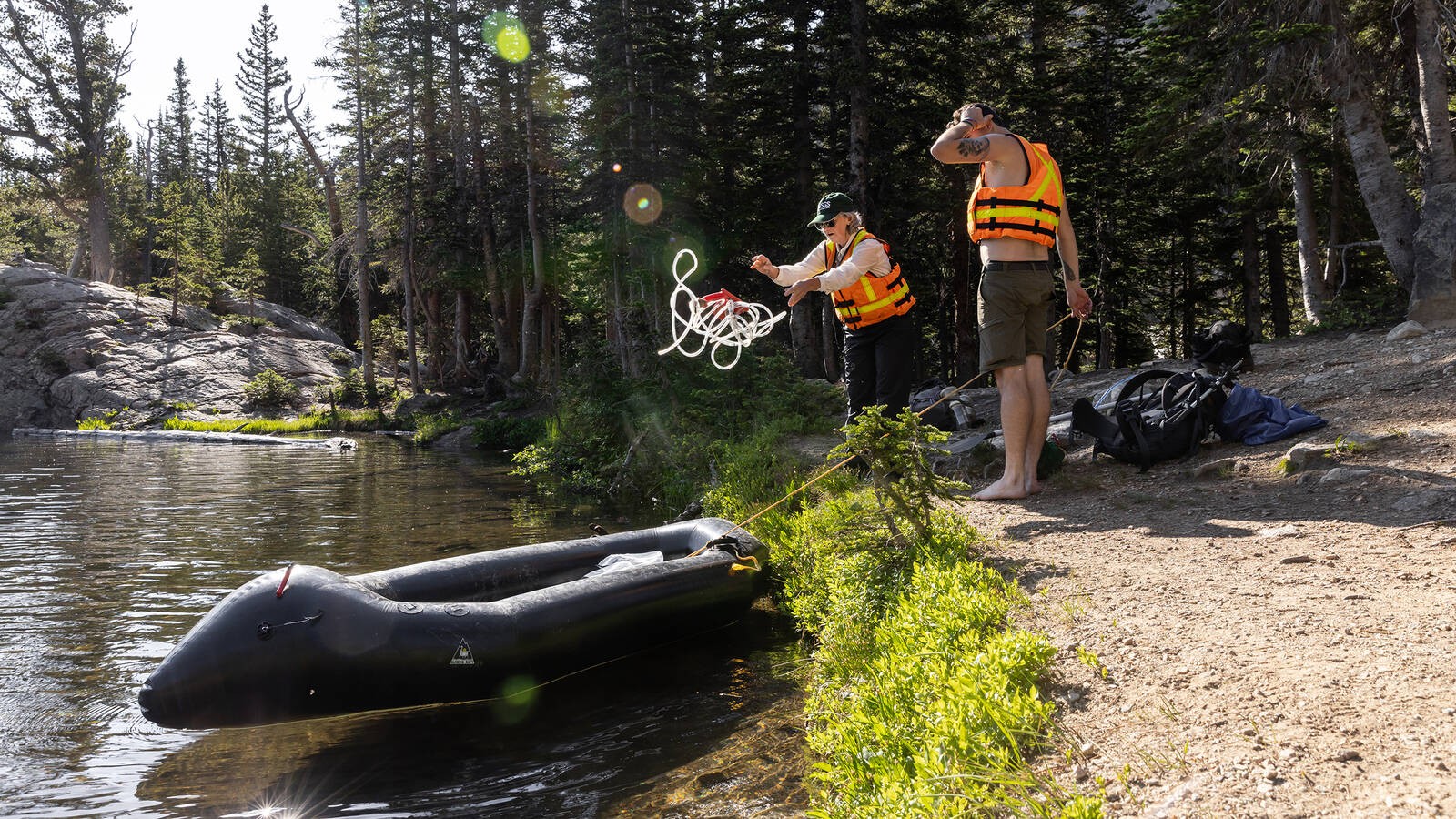 Tourists hiking on a fragile trail in a park
Tourists hiking on a fragile trail in a park
6.3. What Types of Pollution Are Associated with Tourism in National Parks?
Tourism can generate various types of pollution, including air pollution (from vehicles and aircraft), water pollution (from sewage and runoff), noise pollution (from vehicles and crowds), and litter (from游客乱扔垃圾). These pollutants can harm wildlife, degrade water quality, and reduce the aesthetic value of parks.
6.4. How Can Tourism Activities Disturb Wildlife in National Parks?
Tourism activities can disturb wildlife in national parks through noise, light, and human presence. Disturbances can disrupt feeding, breeding, and nesting behaviors, causing stress and reducing reproductive success. Some animals may become habituated to human presence, making them more vulnerable to harm.
6.5. What Is the Impact of Mass Tourism on Park Ecosystems?
Mass tourism, characterized by large numbers of visitors, can have significant impacts on park ecosystems. These impacts include increased pollution, habitat destruction, disturbance of wildlife, and strain on park resources. Mass tourism can also lead to overcrowding, congestion, and a diminished visitor experience.
6.6. How Can National Parks Promote Sustainable Tourism Practices?
National parks can promote sustainable tourism practices by implementing measures such as limiting visitor numbers, encouraging the use of public transportation, promoting responsible wildlife viewing, and educating visitors about environmental stewardship. They can also work with tourism businesses to adopt sustainable practices.
6.7. What Role Do Ecotourism and Nature-Based Tourism Play in Conservation?
Ecotourism and nature-based tourism can play a positive role in conservation by generating revenue for park management, providing economic incentives for local communities to protect natural resources, and raising awareness of environmental issues. However, it is important to ensure that these activities are conducted in a sustainable manner.
6.8. How Can Visitors Contribute to Sustainable Tourism in National Parks?
Visitors can contribute to sustainable tourism in national parks by following park guidelines, minimizing their environmental footprint, supporting local businesses, and participating in conservation activities. They can also educate themselves about the environmental and cultural values of the park.
6.9. What Are the Benefits of Sustainable Tourism for Local Communities?
Sustainable tourism can provide several benefits for local communities, including economic development, job creation, and cultural preservation. It can also empower communities to manage their natural resources more effectively and improve their quality of life.
6.10. How Can National Parks Balance Conservation and Recreation?
National parks can balance conservation and recreation by implementing zoning regulations, managing visitor access, providing educational programs, and monitoring environmental impacts. They can also involve stakeholders in decision-making processes and adapt management strategies based on scientific research.
7. Conservation Strategies for Park Ecosystems
Effective conservation strategies are essential for protecting park ecosystems from the various threats they face. These strategies involve a combination of research, monitoring, management, and education.
7.1. What Are the Key Elements of an Effective Conservation Strategy?
The key elements of an effective conservation strategy include clear goals and objectives, a comprehensive understanding of the threats and challenges, a science-based approach, stakeholder engagement, adaptive management, and long-term monitoring and evaluation.
7.2. How Does Scientific Research Inform Conservation Efforts?
Scientific research provides the foundation for effective conservation efforts by providing information about ecosystem processes, species distributions, and the impacts of human activities. Research can also help identify the most effective management strategies and evaluate the success of conservation interventions.
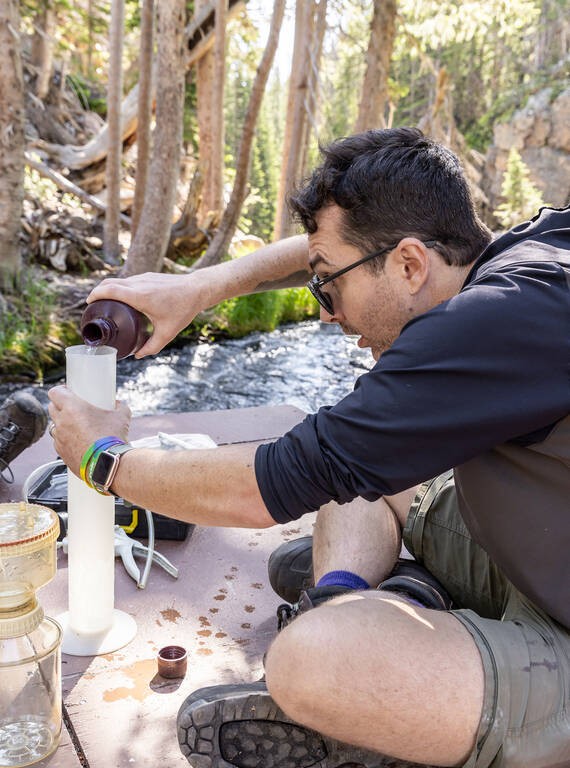 Scientists collecting data in a park ecosystem
Scientists collecting data in a park ecosystem
7.3. What Role Does Monitoring Play in Conservation Management?
Monitoring plays a crucial role in conservation management by tracking changes in ecosystem health, species populations, and the effectiveness of management interventions. Monitoring data can be used to adapt management strategies and ensure that conservation goals are being met.
7.4. How Can Habitat Restoration Improve Ecosystem Health?
Habitat restoration involves restoring degraded or damaged habitats to their natural state. This can improve ecosystem health by increasing biodiversity, enhancing water quality, and providing habitat for wildlife. Habitat restoration can also increase the resilience of ecosystems to climate change.
7.5. What Are the Benefits of Creating Protected Areas and Buffer Zones?
Creating protected areas and buffer zones can help conserve biodiversity and ecosystem function by limiting human activities in sensitive areas. Protected areas can provide habitat for rare and endangered species, while buffer zones can reduce the impacts of human activities on protected areas.
7.6. How Can Community Engagement Enhance Conservation Efforts?
Community engagement is essential for successful conservation efforts because it can build support for conservation initiatives, empower local communities to manage their natural resources sustainably, and ensure that conservation benefits are shared equitably.
7.7. What Is Adaptive Management and Why Is It Important?
Adaptive management is a flexible and iterative approach to conservation that involves monitoring the outcomes of management interventions and adapting strategies based on what is learned. Adaptive management is important because it allows managers to respond to changing conditions and improve the effectiveness of conservation efforts over time.
7.8. How Can National Parks Integrate Conservation into Their Management Plans?
National parks can integrate conservation into their management plans by setting clear conservation goals, conducting comprehensive assessments of natural resources, implementing sustainable tourism practices, and engaging stakeholders in decision-making processes.
7.9. What Role Do International Agreements Play in Park Conservation?
International agreements, such as the Convention on Biological Diversity, can play a role in park conservation by providing a framework for international cooperation, promoting the sharing of knowledge and resources, and setting standards for conservation management.
7.10. How Can Individuals Support Conservation Efforts in National Parks?
Individuals can support conservation efforts in national parks by volunteering for conservation projects, donating to conservation organizations, advocating for policies that protect parks, and practicing responsible tourism.
8. Sustainable Tourism Initiatives in Vietnam with SIXT.VN
SIXT.VN is committed to promoting sustainable tourism in Vietnam by offering services that minimize environmental impact and support local communities. Discover how you can explore Vietnam responsibly with SIXT.VN.
8.1. What Sustainable Tourism Options Does SIXT.VN Offer?
SIXT.VN offers a range of sustainable tourism options, including eco-friendly transportation, accommodations that prioritize sustainability, and tours that support local communities and conservation efforts.
8.2. How Does SIXT.VN Support Local Communities?
SIXT.VN supports local communities by partnering with local businesses, employing local guides, and promoting cultural tourism experiences that benefit local people.
8.3. What Eco-Friendly Transportation Options Are Available Through SIXT.VN?
SIXT.VN offers eco-friendly transportation options such as hybrid and electric vehicles, bicycle rentals, and shuttle services that reduce carbon emissions.
8.4. How Does SIXT.VN Ensure Responsible Wildlife Viewing?
SIXT.VN ensures responsible wildlife viewing by partnering with tour operators who follow ethical guidelines, educating visitors about responsible behavior, and supporting conservation efforts that protect wildlife habitats.
8.5. What Accommodations Does SIXT.VN Recommend for Eco-Conscious Travelers?
SIXT.VN recommends accommodations that prioritize sustainability, such as eco-lodges, green hotels, and homestays that use renewable energy, conserve water, and minimize waste.
8.6. How Can Visitors Reduce Their Environmental Impact with SIXT.VN’s Services?
Visitors can reduce their environmental impact with SIXT.VN’s services by choosing eco-friendly transportation, staying in sustainable accommodations, participating in responsible tours, and following park guidelines.
8.7. What Cultural Tourism Experiences Does SIXT.VN Promote?
SIXT.VN promotes cultural tourism experiences that showcase the rich heritage of Vietnam, such as visits to traditional villages, cultural performances, and interactions with local artisans.
8.8. How Does SIXT.VN Contribute to Conservation Education?
SIXT.VN contributes to conservation education by providing information about environmental issues, promoting responsible behavior, and supporting educational programs in local communities.
8.9. What Volunteer Opportunities Does SIXT.VN Connect Travelers With?
SIXT.VN connects travelers with volunteer opportunities such as tree planting, beach cleanups, and wildlife monitoring projects that contribute to conservation efforts in Vietnam.
8.10. How Can Travelers Book Sustainable Tourism Options with SIXT.VN?
Travelers can easily book sustainable tourism options with SIXT.VN by visiting the website SIXT.VN, contacting customer service, or selecting eco-friendly options when booking transportation, accommodations, and tours.
Planning a trip to Vietnam? Let SIXT.VN help you make it sustainable. Contact us today to learn more about our eco-friendly travel options! Address: 260 Cau Giay, Hanoi, Vietnam. Hotline/Whatsapp: +84 986 244 358. Website: SIXT.VN. Embark on a responsible journey with SIXT.VN.
9. FAQs About Threats to Park Ecosystems
9.1. What are the main threats to park ecosystems?
The main threats to park ecosystems include pollution (air, water, and noise), climate change, habitat destruction, invasive species, and unsustainable tourism practices.
9.2. How does nitrogen pollution impact ecosystems?
Nitrogen pollution can lead to soil acidification, nutrient imbalances, and increased plant growth, which can alter habitat structure and favor certain species over others.
9.3. What role does climate change play in threatening park ecosystems?
Climate change exacerbates existing threats and introduces new challenges, such as rising temperatures, altered precipitation patterns, and increased frequency of extreme weather events.
9.4. How do invasive species affect native ecosystems?
Invasive species can outcompete native species for resources, alter habitat structure, and spread diseases, leading to a decline in native populations and a loss of biodiversity.
9.5. What are unsustainable tourism practices and why are they a threat?
Unsustainable tourism practices harm the environment, deplete natural resources, and degrade the cultural heritage of a destination, leading to habitat destruction, pollution, and disturbance of wildlife.
9.6. How can national parks protect habitats from destruction?
National parks can protect habitats by implementing stricter regulations on development and resource extraction, restoring degraded habitats, and managing visitor use.
9.7. What control methods are used to manage invasive species?
Control methods include prevention, early detection and rapid response, manual removal, chemical control, and biological control.
9.8. How can visitors contribute to sustainable tourism in national parks?
Visitors can follow park guidelines, minimize their environmental footprint, support local businesses, and participate in conservation activities.
9.9. What are the benefits of sustainable tourism for local communities?
Sustainable tourism can provide economic development, job creation, and cultural preservation for local communities.
9.10. How can individuals support conservation efforts in national parks?
Individuals can volunteer for conservation projects, donate to conservation organizations, advocate for policies that protect parks, and practice responsible tourism.



